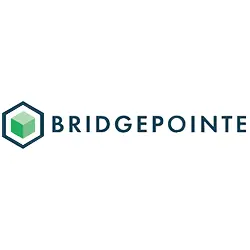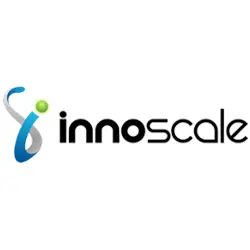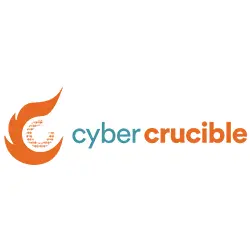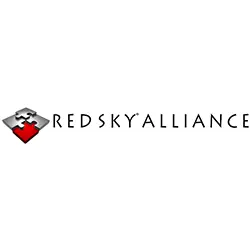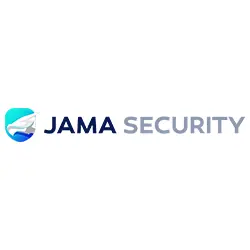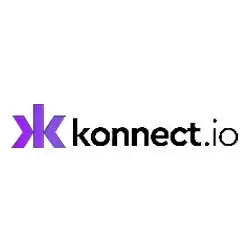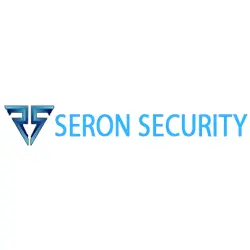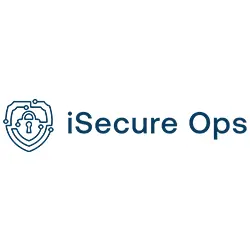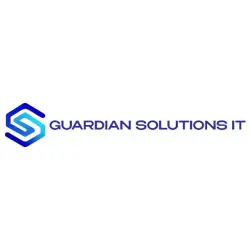Cybersecurity threats are becoming increasingly sophisticated and harder to detect in 2024. A study from 2023 revealed that the average cost of a data breach in 2023 has reached an all-time high, with external threats contributing to a significant portion of these breaches. As organizations continue to adopt new technologies, their digital footprints expand, making them more vulnerable to cyberattacks. This is where External Attack Surface Management (EASM) comes into play.
External Attack Surface Management (EASM) is a crucial aspect of modern cybersecurity that focuses on identifying, monitoring, and securing all external-facing assets of an organization. Unlike traditional attack surface management, which primarily deals with internal assets, EASM extends its scope to cover external threats, including third-party risks, exposed APIs, and cloud services.
In this blog, we’ll explore why traditional methods of securing your digital environment are no longer enough. We’ll look into the importance of EASM, how it provides a comprehensive view of your external attack surface, and why it’s essential for any organization looking to safeguard its digital assets against the plethora of ever-growing threats.
What is External Attack Surface Management (EASM)?
Definition
External Attack Surface Management (EASM) is a specialized branch of cybersecurity focused on identifying, monitoring, and securing an organization’s external-facing digital assets. These assets include websites, cloud services, APIs, and any other elements that are accessible from outside the organization’s internal network. As businesses increasingly rely on digital transformation, their attack surfaces expand, creating more opportunities for cyber attackers to exploit vulnerabilities.
Comparison with Traditional Attack Surface Management
Traditional attack surface management typically focuses on internal assets, such as internal networks, employee devices, and on-premises servers. While internal security is essential, it leaves a significant gap in an organization’s defense if external assets are not equally protected.
EASM addresses this gap by extending the scope of attack surface management beyond the internal perimeter. It takes into account:
- Public-Facing Assets: Websites, web applications, and any digital resources accessible over the internet.
- Third-Party Risks: Vendors and partners who have access to or share critical business data, potentially exposing vulnerabilities.
- Cloud Services: As organizations move their operations to the cloud, managing these external services becomes crucial for securing data and applications.
Key Elements of EASM
External Assets Monitoring
- EASM continuously scans and monitors all external-facing assets, identifying potential entry points that could be exploited by attackers. This includes domains, subdomains, IP addresses, and exposed services.
- Regular monitoring of external assets ensures that any changes in your digital footprint security are detected and addressed promptly.
Third-Party Risk Assessment
- EASM involves evaluating the security posture of third-party vendors and partners. Any vulnerabilities in these external networks can compromise your security, making it vital to assess and mitigate third-party risks regularly.
- Integrating third-party risk management into your EASM strategy helps reduce the likelihood of supply chain attacks.
Continuous Surveillance
- EASM provides continuous surveillance of external assets, allowing organizations to detect and respond to threats in real-time. This proactive approach is essential in the face of rapidly evolving cyber threats.
- Continuous monitoring is crucial for maintaining a strong cyber threat intelligence framework.
Secure Your Business Now
Get Started with TRaViS EASM
Don't wait until it's too late. Start securing your digital assets today with TRaViS EASM. Our platform provides the tools and features you need to protect your business from cyber threats.
Why EASM is Essential in Effective Cybersecurity
The Evolving Threat Landscape
- Cyber threats are continuously evolving, with attackers becoming more sophisticated in their methods. The traditional approach to cybersecurity, which focuses primarily on internal assets, is no longer sufficient to protect against these external threats.
- As organizations expand their digital presence, their external attack surface grows, providing more opportunities for cybercriminals to exploit vulnerabilities. This is why External Attack Surface Management (EASM) has become an indispensable part of a comprehensive cybersecurity strategy.
Increased Complexity with Digital Transformation
- The rapid adoption of cloud services, remote work, and IoT devices has significantly expanded the attack surface of organizations. Each of these technologies introduces new external-facing assets that need to be monitored and secured.
- With the complexity of digital environments increasing, EASM offers a structured approach to managing these external assets, ensuring that they do not become weak links in the organization’s security chain.
Compliance and Regulatory Requirements
- Regulatory bodies are increasingly mandating that organizations take proactive measures to secure their external-facing assets. Compliance with regulations such as GDPR, HIPAA, and others often requires a robust attack surface management strategy.
- EASM helps organizations stay compliant by providing continuous monitoring and reporting on the status of their external assets, ensuring that they meet regulatory standards.
Proactive Risk Management
- One of the key benefits of EASM is its ability to identify and mitigate risks before they can be exploited by attackers. This proactive approach to risk management is essential in minimizing the potential impact of a cyberattack.
- By continuously monitoring external assets, EASM enables organizations to address vulnerabilities as soon as they are discovered, rather than waiting for an incident to occur.
Key Benefits of Implementing EASM
Proactive Risk Management
- EASM allows organizations to identify and mitigate risks before they can be exploited by attackers. This proactive approach is essential in minimizing potential damage and preventing breaches. By continuously monitoring external-facing assets, EASM ensures that vulnerabilities are addressed as soon as they are discovered, rather than waiting for an incident to occur.
- In the context of proactive risk management, EASM helps organizations stay ahead of emerging threats, reducing the likelihood of successful attacks on their external assets.
Comprehensive Visibility
- One of the most significant advantages of EASM is the comprehensive visibility it provides over all external-facing assets. Without a clear view of your entire attack surface, managing security becomes a game of guesswork. EASM offers a complete inventory of all digital assets exposed to the internet, including shadow IT and forgotten assets that could pose risks.
- This comprehensive visibility is crucial for maintaining a robust security posture, as it allows security teams to identify and prioritize the most critical vulnerabilities across the entire attack surface.
Improved Incident Response
- In the event of a security incident, the speed and effectiveness of your response can make all the difference. EASM enables faster detection of potential threats, allowing security teams to respond more efficiently. By providing real-time insights into the status of external assets, EASM helps organizations quickly isolate and remediate issues before they escalate.
- With improved incident response, organizations can minimize the impact of security breaches and reduce recovery time, ultimately protecting their reputation and bottom line.
How TRaViS Enhances EASM
Overview of TRaViS
- TRaViS (Threat Reconnaissance and Vulnerability Intelligence System) is an advanced tool specifically designed to enhance External Attack Surface Management (EASM). It provides organizations with the necessary capabilities to discover, monitor, and secure their external-facing digital assets. Built with state-of-the-art technology, TRaViS offers a comprehensive solution that goes beyond traditional methods, ensuring that every aspect of your external attack surface is covered.
Sites in Portfolio
- TRaViS provides a comprehensive overview of your digital landscape, tracking all domains associated with your account or organization.
- It actively monitors and displays the total number of scans, an up-to-date count of all domain names, and the status of each scan, including successful and failed attempts.
- This feature ensures complete transparency and accountability in your digital asset management.
Exposed API Keys
- TRaViS identifies and reports any API keys that have been inadvertently exposed in your digital assets, including keys for various services such as Google APIs, Amazon Web Services (AWS), and other cloud services.
- It uses a combination of Dynamic Application Security Testing (DAST) and proprietary code enhanced by JSLUICE for superior detection capabilities.
API Issues
- TRaViS comprehensively analyzes and identifies potential vulnerabilities in your API infrastructure, including authentication issues, reverse proxy access points, and various API routes.
- It employs advanced DAST techniques, including reverse proxy discovery, fuzzing, and HTTP header and method fuzzing.
Vulnerabilities Found
- This feature provides an actionable vulnerability list using a proprietary blend of code, expertise, and superior reconnaissance capability.
- It incorporates industry-standard Common Vulnerabilities and Exposures (CVE) database, integration with public tools like NUCLEI, and comprehensive Public Open Source Intelligence (OSINT).
Darkweb Exposures
- TRaViS scans both the clearnet and darknet for potential exposures of your company's sensitive information, leveraging data provided by Red Sky Alliance.
- It covers darkweb markets, leak sites, phishing databases, and data leaks, providing a more comprehensive and context-aware analysis than traditional "have I been pwned" services.
New Assets Detected
- This feature dynamically identifies and reports on new digital assets associated with your organization, including newly discovered subdomains, new IP addresses, and open ports.
- It's prominently displayed on the dashboard and visible only to the user who initiated the scan, ensuring proper access control.
Domain Score
- TRaViS provides an overall score reflecting the security posture of your domain, considering various security factors and potential vulnerabilities.
- It assigns a numerical score (aiming for 1000 as the ideal score) and considers a score between 750 to 1000 as good.
IIS Asset Intelligence
- This feature focuses on identifying and assessing vulnerabilities in Windows servers, including checking for vulnerable DLLs, files, and potential bugs that could be exploited.
Wayback Machine Intel
- TRaViS leverages historical website data to identify potential security risks, showing domain history over time and detecting old errors or vulnerabilities that might still be exploitable.
Search Engine Intel
- This feature utilizes search engine data to identify potential security risks and exposed sensitive information, using advanced Google dorking techniques.
JavaScript Analysis
- TRaViS identifies and analyzes all JavaScript files associated with your domains, detecting potentially vulnerable JavaScript code and revealing sub-resource integrity (SRI) issues.
Content Discovery
- This feature uncovers hidden or sensitive content within your web assets, including potentially sensitive files, directories, and exposed login credentials.
CVE / ANALYSIS
- TRaViS provides a complete export of CVE data relevant to your systems, allowing searching by CVE ID or CVE Name and utilizing the Common Vulnerability Scoring System (CVSS) for severity assessment.
Domain Intel Dashboard
- This central hub provides a comprehensive overview of your domain's security posture and infrastructure, offering a bird's-eye view of various critical metrics and potential security issues.
Darknet and Cyber Threat Intelligence (CTI)
- TRaViS provides insights into potential data breaches and exposed information on the dark web, offering a searchable database of potential data exposures.
By leveraging these comprehensive features, TRaViS provides organizations with a powerful toolset for managing their external attack surface effectively, enhancing their overall security posture, and staying ahead of potential threats.
Implementing EASM with TRaViS: Best Practices
To maximize the benefits of External Attack Surface Management using TRaViS, consider the following best practices:
Start with a Comprehensive Asset Inventory
Begin by utilizing TRaViS's Sites in Portfolio feature to conduct a thorough inventory of all your external-facing assets. This includes websites, subdomains, APIs, cloud services, and any other internet-accessible resources. The automated discovery process ensures that no asset goes unnoticed, providing a solid foundation for your EASM strategy.
Prioritize Vulnerabilities Based on Risk
Leverage TRaViS's Domain Score and CVE / ANALYSIS features to prioritize vulnerabilities based on their potential impact and exploitability. The color-coded severity ratings and CVSS scores allow your security team to focus on the most critical issues first, maximizing the efficiency of your remediation efforts.
Implement Continuous Monitoring
Set up TRaViS to provide continuous surveillance of your external attack surface. The New Assets Detected feature ensures that any changes or new vulnerabilities are identified promptly, allowing for rapid response and mitigation. Regular scans using the Domain Scanner Page will keep your security posture up-to-date.
Leverage Dark Web Intelligence
Make full use of TRaViS's Darknet and Cyber Threat Intelligence (CTI) capabilities. This feature can provide early warnings of potential data breaches or leaked credentials, allowing you to take preemptive action before the information can be exploited.
Secure Your APIs
Utilize TRaViS's API Issues and Exposed API Keys features to identify and address vulnerabilities in your API infrastructure. Regularly review and update your API security measures to prevent unauthorized access and data leaks.
Implement Asset Classification
Use the Asset Color Assignment Page to classify your digital assets based on sensitivity and importance. This allows for more efficient allocation of security resources and helps in prioritizing security efforts across your digital landscape.
Conduct Regular JavaScript Analysis
Leverage TRaViS's JavaScript Analysis feature to regularly scan and assess the security of your JavaScript files. This helps in identifying potential client-side vulnerabilities and ensuring the integrity of your web applications.
Utilize Historical Data
Make use of the Wayback Machine Intel feature to identify potential security risks that might have been introduced in the past. This historical perspective can reveal vulnerabilities that might otherwise go unnoticed.
Integrate EASM into Your Overall Security Strategy
While EASM is crucial, it should be part of a broader, holistic security approach. Use the insights gained from TRaViS's comprehensive features to inform other aspects of your security strategy, such as employee training, incident response planning, and security policy development.
The Future of EASM and TRaViS
As the digital landscape continues to evolve, so too will the challenges and opportunities in External Attack Surface Management. TRaViS is committed to staying at the forefront of this evolution, continuously improving and expanding its capabilities to meet the changing needs of organizations.
Upcoming Features
While TRaViS already offers a comprehensive suite of EASM tools, future updates may include:
- Enhanced third-party risk assessment capabilities
- Expanded AI and machine learning integration for more accurate threat prediction and analysis
- Improved integration with other security tools and platforms for a more seamless security workflow
Industry Trends
As EASM becomes increasingly essential, we can expect to see:
- Greater emphasis on real-time threat intelligence and rapid response capabilities
- Increased focus on securing cloud assets and services as organizations continue to migrate to the cloud
- More stringent regulatory requirements around external asset management and security
Conclusion
In today's rapidly evolving threat landscape, External Attack Surface Management has become an indispensable component of a comprehensive cybersecurity strategy. TRaViS offers a powerful, feature-rich solution to the challenges of EASM, providing organizations with the tools they need to discover, monitor, and secure their external-facing assets effectively.
By implementing TRaViS and following best practices in EASM, organizations can significantly reduce their risk of data breaches, improve their overall security posture, and stay ahead of emerging threats. From comprehensive asset discovery and vulnerability assessment to dark web monitoring and JavaScript analysis, TRaViS provides a holistic approach to managing your external attack surface.
As we look to the future, the importance of EASM will only continue to grow, and tools like TRaViS will play a crucial role in helping organizations navigate the complexities of the digital world securely. Don't wait for a security incident to highlight the vulnerabilities in your external attack surface. Take proactive steps today to implement a robust EASM strategy with TRaViS and secure your organization's digital future.
